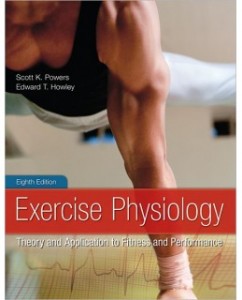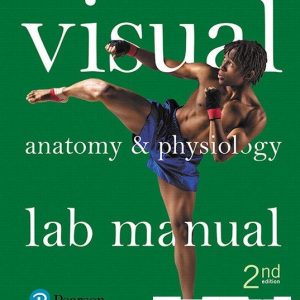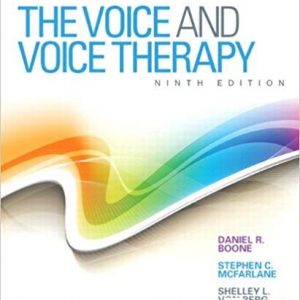This is completed downloadable of Test Bank for Exercise Physiology, 8th Edition: Scott Powers

Product Details:
- ISBN-10 : 0078022533
- ISBN-13 : 978-0078022531
- Author: Scott Powers
Written especially for exercise science and physical education students, this text provides a solid foundation in theory illuminated by application and performance models to increase understanding and to help students apply what they’ve learned in the classroom and beyond.
Table of Content:
- SECTION 1. Physiology of Exercise
- Chapter 0. Introduction to Exercise Physiology
- Brief History of Exercise Physiology
- European Heritage
- Harvard Fatigue Laboratory
- Physiology, Physical Fitness, and Health
- Physical Education to Exercise Science and Kinesiology
- Graduate Study and Research in the Physiology of Exercise
- Professional and Scientific Societies and Research Journals
- Training in Research
- Careers in Exercise Science and Kinesiology
- Chapter 1. Measurement of Work, Power, and Energy Expenditure
- Units of Measure
- Metric System
- SI Units
- Work and Power Defined
- Work
- Power
- Measurement of Work and Power
- Bench Step
- Cycle Ergometer
- Treadmill
- Measurement of Energy Expenditure
- Direct Calorimetry
- Indirect Calorimetry
- Common Expressions of Energy Expenditure
- Estimation of Energy Expenditure
- Calculation of Exercise Efficiency
- Factors That Influence Exercise Efficiency
- Running Economy
- Chapter 2. Control of the Internal Environment
- Homeostasis: Dynamic Constancy
- Control Systems of the Body
- Nature of the Control Systems
- Negative Feedback
- Positive Feedback
- Gain of a Control System
- Examples of Homeostatic Control
- Regulation of Body Temperature
- Regulation of Blood Glucose
- Exercise: A Test of Homeostatic Control
- Exercise Improves Homeostatic Control Via Cellular Adaptation
- Stress Proteins Assist in the Regulation of Cellular Homeostasis
- Chapter 3. Bioenergetics
- Cell Structure
- Biological Energy Transformation
- Cellular Chemical Reactions
- Oxidation-Reduction Reactions
- Enzymes
- Fuels for Exercise
- Carbohydrates
- Fats
- Proteins
- High-Energy Phosphates
- Bioenergetics
- Anaerobic ATP Production
- Aerobic ATP Production
- Aerobic ATP Tally
- Efficiency of Oxidative Phosphorylation
- Control of Bioenergetics
- Control of ATP-PC System
- Control of Glycolysis
- Control of Krebs Cycle and Electron Transport Chain
- Interaction Between Aerobic/Anaerobic ATP Production
- Chapter 4. Exercise Metabolism
- Energy Requirements at Rest
- Rest-to-Exercise Transitions
- Recovery from Exercise: Metabolic Responses
- Metabolic Responses to Exercise: Influence of Duration and Intensity
- Short-Term, Intense Exercise
- Prolonged Exercise
- Incremental Exercise
- Estimation of Fuel Utilization During Exercise
- Factors Governing Fuel Selection
- Exercise Intensity and Fuel Selection
- Exercise Duration and Fuel Selection
- Interaction of Fat/Carbohydrate Metabolism
- Body Fuel Sources
- Chapter 5. Cell Signaling and the Hormonal Responses to Exercise
- Neuroendocrinology
- Blood Hormone Concentration
- Hormone-Receptor Interaction
- Hormones: Regulation and Action
- Hypothalamus and the Pituitary Gland
- Thyroid Gland
- Parathyroid Gland
- Adrenal Gland
- Pancreas
- Testes and Ovaries
- Hormonal Control of Substrate Mobilization During Exercise
- Muscle-Glycogen Utilization
- Blood Glucose Homeostasis During Exercise
- Hormone-Substrate Interaction
- Chapter 6. Exercise and the Immune System
- Overview of the Immune System
- Innate Immune System
- Acquired Immune System
- Exercise and the Immune System
- Exercise and Resistance to Infection
- High-Intensity/Long-Duration Aerobic Exercise Increases the Risk of Infection
- Exercising in Environmental Extremes: Increased Risk for Infection?
- Should You Exercise When You Have a Cold?
- Chapter 7. The Nervous System: Structure and Control of Movement
- General Nervous System Functions
- Organization of the Nervous System
- Structure of the Neuron
- Electrical Activity in Neurons
- Sensory Information and Reflexes
- Joint Proprioceptors
- Muscle Proprioceptors
- Muscle Chemoreceptors
- Withdrawal Reflex
- Somatic Motor Function and Motor Neurons
- Vestibular Apparatus and Equilibrium
- Motor Control Functions of the Brain
- Brain Stem
- Cerebrum
- Cerebellum
- Role of the Brain in Exercise-Induced Fatigue
- Motor Functions of the Spinal Cord
- Control of Motor Functions
- Autonomic Nervous System
- Exercise Enhances Brain Health
- Chapter 8. Skeletal Muscle: Structure and Function
- Structure of Skeletal Muscle
- Neuromuscular Junction
- Muscular Contraction
- Overview of the Sliding Filament/Swinging Lever-Arm Model
- Energy for Contraction
- Regulation of Excitation-Contraction Coupling
- Exercise and Muscle Fatigue
- Exercise-Associated Muscle Cramps
- Fiber Types
- Overview of Biochemical and Contractile Characteristics of Skeletal Muscle
- Characteristics of Individual Fiber Types
- Fiber Types and Performance
- Muscle Actions
- Speed of Muscle Action and Relaxation
- Force Regulation in Muscle
- Force-Velocity/Power-Velocity Relationships
- Chapter 9. Circulatory Responses to Exercise
- Organization of the Circulatory System
- Structure of the Heart
- Pulmonary and Systemic Circuits
- Heart: Myocardium and Cardiac Cycle
- Myocardium
- Cardiac Cycle
- Arterial Blood Pressure
- Factors That Influence Arterial Blood Pressure
- Electrical Activity of the Heart
- Cardiac Output
- Regulation of Heart Rate
- Heart Rate Variability
- Regulation of Stroke Volume
- Hemodynamics
- Physical Characteristics of Blood
- Relationships Among Pressure, Resistance, and Flow
- Sources of Vascular Resistance
- Changes in Oxygen Delivery to Muscle During Exercise
- Changes in Cardiac Output During Exercise
- Changes in Arterial-Mixed Venous O2 Content During Exercise
- Redistribution of Blood Flow During Exercise
- Regulation of Local Blood Flow During Exercise
- Circulatory Responses to Exercise
- Emotional Influence
- Transition from Rest to Exercise
- Recovery from Exercise
- Incremental Exercise
- Arm Versus Leg Exercise
- Intermittent Exercise
- Prolonged Exercise
- Regulation of Cardiovascular Adjustments to Exercise
- Chapter 10. Respiration During Exercise
- Function of the Lung
- Structure of the Respiratory System
- Conducting Zone
- Respiratory Zone
- Mechanics of Breathing
- Inspiration
- Expiration
- Airway Resistance
- Pulmonary Ventilation
- Pulmonary Volumes and Capacities
- Diffusion of Gases
- Blood Flow to the Lung
- Ventilation-Perfusion Relationships
- O2 and CO2 Transport in Blood
- Hemoglobin and O2 Transport
- Oxyhemoglobin Dissociation Curve
- O2 Transport in Muscle
- CO2 Transport in Blood
- Ventilation and Acid-Base Balance
- Ventilatory and Blood-Gas Responses to Exercise
- Rest-to-Work Transitions
- Prolonged Exercise in a Hot Environment
- Incremental Exercise
- Control of Ventilation
- Ventilatory Regulation at Rest
- Respiratory Control Center
- Effect of Blood PCO2, PO2, and Potassium on Ventilation
- Neural Input to the Respiratory Control Center
- Ventilatory Control During Submaximal Exercise
- Ventilatory Control During Heavy Exercise
- Do the Lungs Adapt to Exercise Training?
- Does the Pulmonary System Limit Maximal Exercise Performance?
- Chapter 11. Acid-Base Balance During Exercise
- Acids, Bases, and pH
- Hydrogen Ion Production During Exercise
- Importance of Acid-Base Regulation During Exercise
- Acid-Base Buffer Systems
- Intracellular Buffers
- Extracellular Buffers
- Respiratory Influence on Acid-Base Balance
- Regulation of Acid-Base Balance via the Kidneys
- Regulation of Acid-Base Balance During Exercise
- Chapter 12. Temperature Regulation
- Overview of Heat Balance During Exercise
- Temperature Measurement During Exercise
- Overview of Heat Production/Heat Loss
- Heat Production
- Heat Loss
- Heat Storage in the Body During Exercise
- Body’s Thermostat—Hypothalamus
- Shift in the Hypothalamic Thermostat Set Point Due to Fever
- Thermal Events During Exercise
- Heat Index—A Measure of How Hot It Feels
- Exercise in a Hot Environment
- Sweat Rates During Exercise
- Exercise Performance is Impaired in a Hot Environment
- Gender and Age Differences in Thermoregulation
- Heat Acclimation
- Loss of Acclimation
- Exercise in a Cold Environment
- Cold Acclimation
- Chapter 13. The Physiology of Training: Effect on V̇O2 Max, Performance, Homeostasis, and Strength
- Principles of Training
- Overload
- Specificity
- Endurance Training and V̇O2 Max
- Training Programs and Changes in V̇O2 Max
- Why Does Exercise Training Improve V̇O2 Max?
- Stroke Volume
- Arteriovenous O2 Difference
- Endurance Training: Effects on Performance and Homeostasis
- Endurance Training-Induced Changes in Fiber Type and Capillarity
- Endurance Training Increases Mitochondrial Content in Skeletal Muscle Fibers
- Biochemical Adaptations and Plasma Glucose Concentration
- Endurance Training Improves Muscle Antioxidant Capacity
- Exercise Training Improves Acid-Base Balance During Exercise
- Molecular Bases of Exercise Training Adaptation
- Training Adaptation—Big Picture
- Specificity of Exercise Training Responses
- Primary Signal Transduction Pathways in Skeletal Muscle
- Secondary Messengers in Skeletal Muscle
- Signaling Events Leading to Endurance Training-Induced Muscle Adaptation
- Endurance Training: Links Between Muscle and Systemic Physiology
- Peripheral Feedback
- Central Command
- Detraining Following Endurance Training
- Physiological Effects of Strength Training
- Mechanisms Responsible for Resistance Training-Induced Increases in Strength
- Resistance Training-Induced Changes in the Nervous System
- Resistance Training-Induced Increases in Skeletal Muscle Size
- Resistance Training-Induced Changes in Muscle Fiber Type
- Can Resistance Training Improve Muscle Oxidative Capacity and Increase Capillary Number?
- Resistance Training Improves Muscle Antioxidant Enzyme Activity
- Signaling Events Leading to Resistance Training-Induced Muscle Growth
- Detraining Following Strength Training
- Concurrent Strength and Endurance Training
- Mechanisms Responsible for the Impairment of Strength Development During Concurrent Strength and End
- SECTION 2. Physiology of Health and Fitness
- Chapter 14. Risk Factors and Inflammation: Links to Chronic Disease
- Risk Factors for Heart Disease
- Inherited/Biological
- Environmental
- Behaviors
- Coronary Heart Disease
- Physical Inactivity as a Risk Factor
- Inflammation and Coronary Heart Disease
- Obesity, Inflammation, and Chronic Disease
- Drugs, Diet, and Physical Activity
- The Metabolic Syndrome
- Chapter 15. Work Tests to Evaluate Cardiorespiratory Fitness
- Testing Procedures
- Screening
- Resting and Exercise Measures
- Field Tests for Estimating CRF
- Maximal Run Tests
- Walk Tests
- Canadian Home Fitness Test
- Graded Exercise Tests: Measurements
- Heart Rate
- Blood Pressure
- ECG
- Rating of Perceived Exertion
- Termination Criteria
- V̇O2 Max
- Estimation of V̇O2 Max from Last Work Rate
- Estimation of V̇O2 Max from Submaximal HR Response
- Graded Exercise Test: Protocols
- Treadmill
- Cycle Ergometer
- Step Test
- Chapter 16. Exercise Prescriptions for Health and Fitness
- Prescription of Exercise
- Dose-Response
- Physical Activity and Health
- General Guidelines for Improving Fitness
- Screening
- Progression
- Warm-Up, Stretch, and Cool-Down, Stretch
- Exercise Prescription for CRF
- Frequency
- Duration
- Intensity
- Sequence of Physical Activity
- Walking
- Jogging
- Games and Sports
- Strength and Flexibility Training
- Environmental Concerns
- Chapter 17. Exercise for Special Populations
- Diabetes
- Exercise and the Diabetic
- Asthma
- Diagnosis and Causes
- Prevention/Relief of Asthma
- Exercise-Induced Asthma
- Chronic Obstructive Pulmonary Disease
- Testing and Training
- Hypertension
- Cardiac Rehabilitation
- Population
- Testing
- Exercise Programs
- Exercise for Older Adults
- Maximal Aerobic Power
- Osteoporosis
- Strength
- Exercise During Pregnancy
- Chapter 18. Body Composition and Nutrition for Health
- Nutritional Guidelines
- Standards of Nutrition
- Classes of Nutrients
- Water
- Vitamins
- Minerals
- Carbohydrates
- Fats
- Protein
- Meeting the Dietary Guidelines
- Food Group Plans
- Evaluating the Diet
- Body Composition
- Methods of Assessing Overweight and Obesity
- Methods of Measuring Body Composition
- Two-Component System of Body Composition
- Body Fatness for Health and Fitness
- Obesity and Weight Control
- Obesity
- Diet, Exercise, and Weight Control
- Energy and Nutrient Balance
- Diet and Weight Control
- Energy Expenditure and Weight Control
- SECTION 3. Physiology of Performance
- Chapter 19. Factors Affecting Performance
- Sites of Fatigue
- Central Fatigue
- Peripheral Fatigue
- Factors Limiting All-Out Anaerobic Performances
- Ultra Short-Term Performances (10 Seconds or Less)
- Short-Term Performances (10 to 180 Seconds)
- Factors Limiting All-Out Aerobic Performances
- Moderate-Length Performances (3 to 20 Minutes)
- Intermediate-Length Performances (21 to 60 Minutes)
- Long-Term Performances (1 to 4 Hours)
- Athlete as Machine
- Chapter 20. Laboratory Assessment of Human Performance
- Laboratory Assessment of Physical Performance
- Physiological Testing: Theory and Ethics
- What the Athlete Gains by Physiological Testing
- What Physiological Testing Will Not Do
- Components of Effective Physiological Testing
- Direct Testing of Maximal Aerobic Power
- Specificity of Testing
- Exercise Test Protocol
- Determination of Peak V̇O2 in Paraplegic Athletes
- Laboratory Tests to Predict Endurance Performance
- Use of the Lactate Threshold to Evaluate Performance
- Measurement of Critical Power
- Tests to Determine Exercise Economy
- Estimating Success in Distance Running Using the Lactate Threshold and Running Economy
- Determination of Anaerobic Power
- Tests of Ultra Short-Term Maximal Anaerobic Power
- Tests of Short-Term Anaerobic Power
- Evaluation of Muscular Strength
- Criteria for Selection of a Strength-Testing Method
- Isometric Measurement of Strength
- Free-Weight Testing of Strength
- Isokinetic Assessment of Strength
- Variable-Resistance Measurement of Strength
- Chapter 21. Training for Performance
- Training Principles
- Overload, Specificity, and Reversibility
- Influence of Gender and Initial Fitness Level
- Influence of Genetics
- Components of a Training Session: Warm-Up, Workout, and Cool Down
- Training to Improve Aerobic Power
- Interval Training
- Long, Slow-Distance Exercise
- High-Intensity, Continuous Exercise
- Altitude Training Improves Exercise Performance at Sea Level
- Injuries and Endurance Training
- Training to Improve Anaerobic Power
- Training to Improve the ATP-PC System
- Training to Improve the Glycolytic System
- Training to Improve Muscular Strength
- Progressive Resistance Exercise
- General Strength-Training Principles
- Free Weights Versus Machines
- Concurrent Strength- and Endurance-Training Programs
- Gender Differences in Response to Strength Training
- Muscle Soreness
- Training to Improve Flexibility
- Year-Round Conditioning for Athletes
- Off-Season Conditioning
- Preseason Conditioning
- In-Season Conditioning
- Common Training Mistakes
- Chapter 22. Training for the Female Athlete, Children, Special Populations, and the Masters Athlete
- Factors Important to Women Involved in Vigorous Training
- Exercise and Menstrual Disorders
- Training and Menstruation
- The Female Athlete and Eating Disorders
- Eating Disorders: Final Comments
- Bone Mineral Disorders and the Female Athlete
- Exercise During Pregnancy
- Risk of Knee Injury in Female Athletes
- Sports Conditioning for Children
- Training and the Cardiopulmonary System
- Training and the Musculoskeletal System
- Progress in Pediatric Exercise Science
- Competitive Training for Diabetics
- Training for Asthmatics
- Epilepsy and Physical Training
- Does Exercise Promote Seizures?
- Risk of Injury Due to Seizures
- Exercise Performance and Training for Masters Athletes
- Age-Related Changes in Muscular Strength
- Aging and Endurance Performance
- Training Guidelines for Masters Athletes
- Chapter 23. Nutrition, Body Composition, and Performance
- Carbohydrate
- Carbohydrate Diets and Performance
- Carbohydrate Intake Prior to or During a Performance
- Carbohydrate Intake Post-Performance
- Protein
- Protein Requirements and Exercise
- Protein Requirements for Athletes
- Water and Electrolytes
- Fluid Replacement—Before Exercise
- Fluid Replacement—During Exercise
- Fluid Replacement—After Exercise
- Salt (NaCl)
- Minerals
- Iron
- Vitamins
- Precompetition Meal
- Nutrients in Precompetition Meal
- Body Composition and Performance
- Chapter 24. Exercise and the Environment
- Altitude
- Atmospheric Pressure
- Short-Term Anaerobic Performance
- Long-Term Aerobic Performance
- Maximal Aerobic Power and Altitude
- Acclimatization to High Altitude
- Training for Competition at Altitude
- The Quest for Everest
- Heat
- Hyperthermia
- Cold
- Environmental Factors
- Insulating Factors
- Heat Production
- Descriptive Characteristics
- Dealing with Hypothermia
- Air Pollution
- Particulate Matter
- Ozone
- Sulfur Dioxide
- Carbon Monoxide
- Chapter 25. Ergogenic Aids
- Research Design Concerns
- Dietary Supplements
- Aerobic Performance
- Oxygen
- Blood Doping
- Anaerobic Performance
- Blood Buffers
- Drugs
- Amphetamines
- Caffeine
- Nicotine
- Physical Warm-Up
- Glossary
- Credits
- Index





